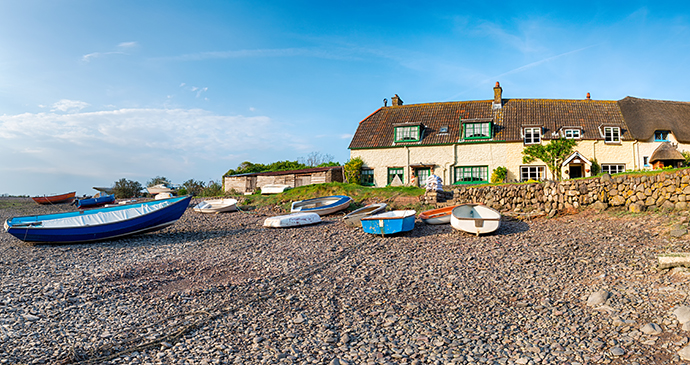At Porlock Weir, the shingle bar protected a tidal inlet and kept the harbour open – as it has been now for at least a thousand years.
The sea left Porlock’s working harbour high and dry back in the Middle Ages, but at neighbouring Porlock Weir the shingle bar protected a tidal inlet and kept the harbour open – as it has been now for at least a thousand years. In the 18th and 19th centuries, Porlock Weir was a busy little port, for coasters carrying timber across to South Wales and returning with coal.

There was also an oyster fleet, and these delicacies are once again being farmed here. Today yachts come and go from its sheltered marina and fishing boats bring in their catch. The row of thatched cottages next to the harbour provides a strand of brightness between the grey expanse of shingle and the dark woods above.
The village has a large car park with toilets for walkers. Facing the harbour is a variety of places to eat, including the Harbour Gallery and Café, which combines homemade cakes, good coffee, ceramics and paintings; and Ziangs for Asian street food.
A little maritime museum displays old photos and relics, including details of the lifeboat Louisa’s heroic rescue in 1899; next door is Exmoor Glass, where you can browse a huge selection of stained-glass objects. Exmoor Adventures offers kayaking, stand-up paddle boarding and other water activities.